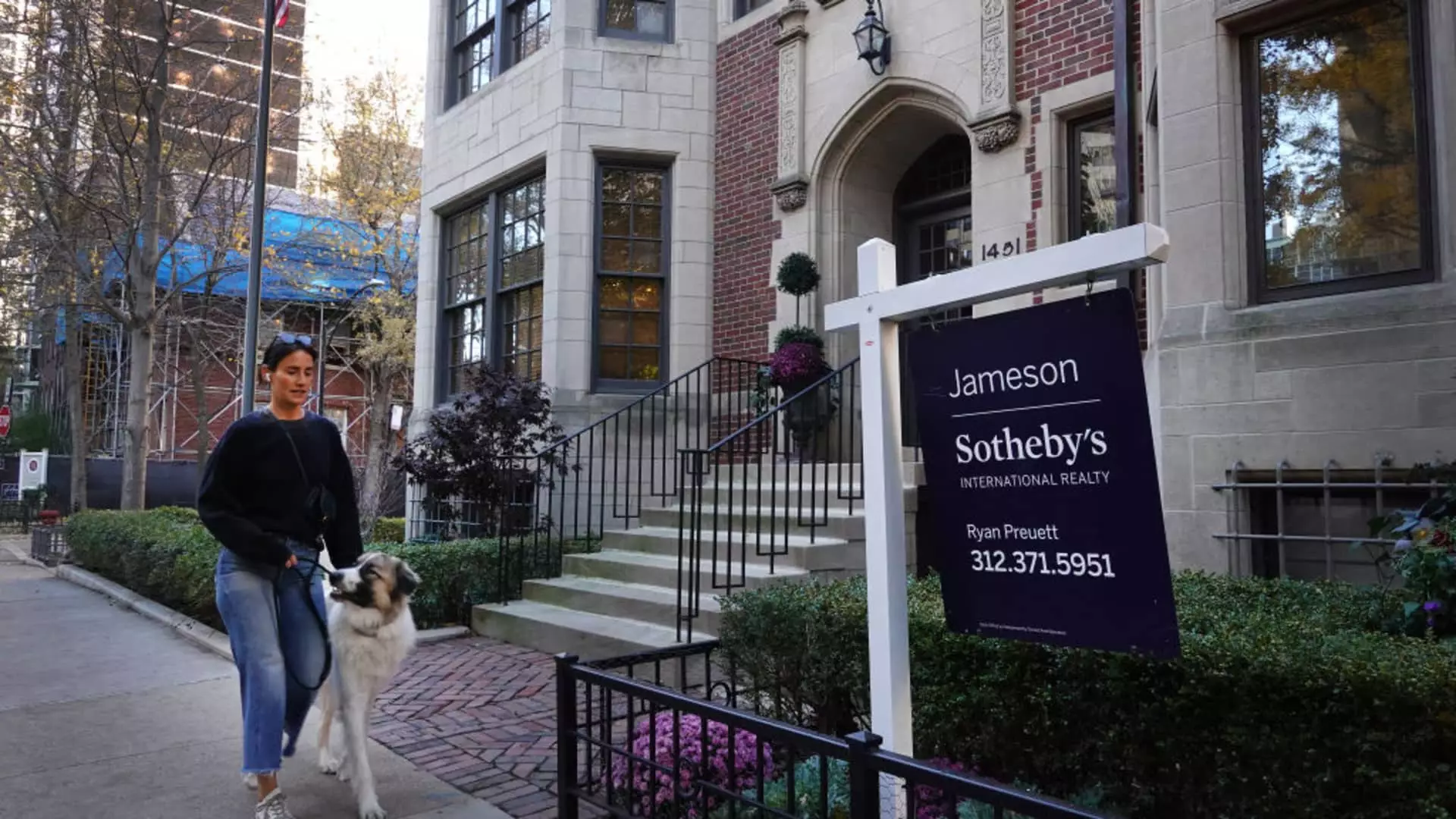In August 2023, the housing market experienced a notable downturn in sales of previously owned homes, with a reported decline of 2.5% from the preceding month, bringing the seasonally adjusted annualized rate down to 3.86 million units. The National Association of Realtors (NAR) confirmed this downturn, which fell slightly short of the anticipated figures set by analysts. The total sales for the month also reflected a 4.2% drop when compared to August of the previous year, marking a concerning trend that indicates a struggle in the housing market.
This slump represents a continuous decline, as home sales have now stayed beneath the 4 million annualized mark for three consecutive months. The data correspond to closings that likely originated from contracts signed during late June and July, a period when mortgage rates were beginning to drop but remained notably elevated compared to current levels. At that time, the average interest rate for the widely-utilized 30-year fixed mortgage hovered just above 7%, but gradually fell to approximately 6.7% by the end of July, according to reports from Mortgage News Daily. This scenario raises questions about whether the observed sales figures are a consequence of the lag in the home-buying process or a reflection of deeper market issues.
Lawrence Yun, NAR’s chief economist, offered insights into the current dynamics of the market. He acknowledged the disappointments reflected in the August sales data but indicated a flicker of hope arising from a combination of declining mortgage rates and an uptick in housing inventory. “The home-buying process, from the initial search to getting the house keys, typically takes several months,” Yun observed, hinting that recent changes might take time to influence buyer behavior measurably.
Improvement in the inventory of homes available for sale is noteworthy. By the end of August, there were 1.35 million units listed, representing a 0.7% increase from July and a substantial 22.7% climb compared to the same period the previous year. While this increase in listings is welcome news for potential buyers, it is crucial to note that the current 4.2-month supply is still considered tight; a stable market typically boasts a six-month supply, indicating a more balanced condition between buyers and sellers. Yun emphasized this improvement, highlighting that buyers are in a more favorable position as inventory rises, although he cautioned that in markets with constrained supplies, particularly in the Northeast, sellers could still maintain leverage.
Despite the slight improvement in inventory, tight supply conditions continue to exert upward pressure on home prices. The median price for existing homes sold in August was reported at $416,700, representing a 3.1% increase compared to the same month last year—the highest recorded median price for August to date. While the median price provides a broad overview, it is essential to dissect this information further: elevated sales in the higher price bracket (homes priced above $750,000) contrast starkly with declining sales for homes priced below $500,000.
This dichotomy suggests a market that is increasingly catering to wealthier buyers while leaving first-time buyers at a disadvantage. Notably, first-time homebuyers accounted for just 26% of the sales in August, tying an all-time low set in November 2021. This trend is distressing, particularly in light of rising housing costs that continue to outpace incomes for many potential buyers.
Furthermore, all-cash transactions represented an impressive 26% of sales, affirming the prevalence of financially equipped investors in the current market landscape. While this percentage signifies a slight decline from the previous year, it remains historically high, illuminating the competitive nature of the sector.
The recent trajectory of mortgage rates offers a glimmer of hope for prospective buyers. Rates have plummeted to around 6.15%, the lowest point seen in nearly two years, potentially encouraging more participation in the market. As financial conditions shift and inventory continues to rise, the question remains: will these changes be sufficient to ignite a recovery in home sales?
The current state of the housing market reflects a complex interplay of declining sales amidst improving inventory and shifting mortgage rates. While immediate signs of sales recovery remain elusive, the evolving economic landscape offers avenues for potential growth in the coming months, dependent largely on buyer sentiment and financial accessibility.

